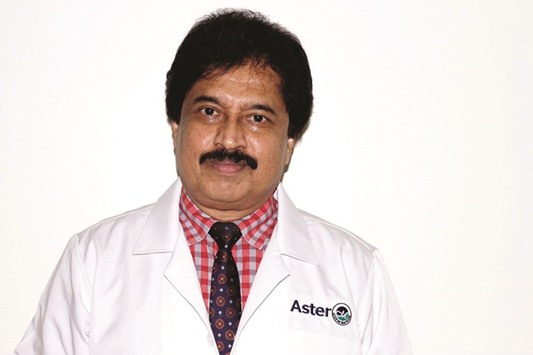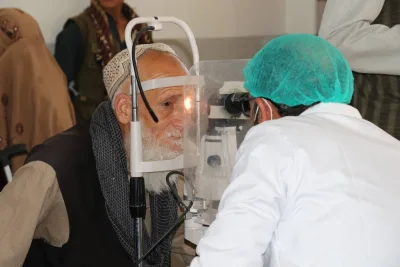A child needs many abilities to succeed in school. Good vision is a key. It has been estimated that as much as 80% of the learning a child does occurs through his or her eyes. Reading, writing, chalkboard work, and using computers are among the visual tasks students perform daily. A child’s eyes are constantly in use in the classroom and at play. When his or her vision is not functioning properly, education and participation in sports can suffer.
Lazy eye or Amblyopia is a condition of reduced vision in one or both eyes due to abnormal development of vision in infancy or childhood. The visual loss occurs because the center for vision in the brain doesn’t develop properly due to blurred images from the eye. The child uses the better eye and the weaker eye becomes “lazy” or amblyopic. Amblyopia is the leading cause of vision loss among children
Types of Amblyopia
There are different types of amblyopia:
Refractive Amblyopia: This is usually due to a difference in refractive error in one eye which results in amblyopia in that eye or due to high lens power in both eyes which results in Amblyopia in both eyes, if the child does not use spectacles early. In this case Amblyopia can be prevented if the problem is diagnosed early and the spectacles are prescribed immediately.
Strabismic Amblyopia: Strabismic Amblyopia develops when the eyes are not straight. One eye may turn in, out, up or down. When this happens, the brain ignores the weaker images from the deviated eye which becomes lazy.
Deprivation Amblyopia: Usually develops when the child develops cataract or any other media opacities. This can happen in one eye or in both. If not treated very early, this can lead to very poor vision.
What is the ideal time for eye screening for children?
Children aged 4 years who can read letters or numbers can be screened. If the parents observe any abnormalities like squint, frequent blinking, squeezing of the eyes or abnormal movements of the eyes, should be brought to the eye specialist at the earliest.
When Amblyopia should be treated?
Early diagnosis and treatment is very important. Conditions like cataract should be surgically corrected at the earliest to minimise Amblyopia. Those who need spectacles should start using it very early. Once Amblyopia sets in, just using spectacles is not enough. They require eye patching (Occlusion Therapy) or usage of Atropine drops in the normal eye.
What is Occlusion Therapy?
Occlusion therapy means occlusion or patching of the good eye, thereby the child uses only the weak eye. It should be done only under the supervision of an Eye Specialist. The good eye has to be patched every day for few hours and the child should use the spectacles with the eye patched and the weaker eye is used for all the activities, it’s very important that the child should not sleep with the eye being patched. If both the eyes are lazy, patching is done on alternate days on each eye. The child should make frequent visits to the eye specialist to assess the condition, usually every 2-3 months. Once the vision becomes normal, patching can be discontinued.
What are the other treatment methods for Amblyopia?
Even though patching is the best, for those who do not co-operate, Atropine eye drops can be used in the normal eye to deliberately blur the image in the good eye so that the child uses his lazy eye more. In Strabismic Amblyopia Surgery is done after correcting the Amblyopia or sometime as a primary procedure if there is no refractive error in the squinting eye.
How long is the Occlusion Therapy to be continued?
The principle behind the Occlusion Therapy is to make the weaker eye work more and the best results are seen if Amblyopia is treated at a younger age, before 6 years. The more the age, the poorer the result will be. The duration of patching (Occlusion) also depends on the age and the degree of Amblyopia. If the child is missing the last 2-3 lines of the Snellen’s chart, it’s enough to patch the good eye 3-4 hours a day for about six months, if he is less than 6 years of age. The same will take more than 1 year of 6 hours of patching if the child is 8 years old. The result is not encouraging if the child is 10 years of age or older.
During which activities should patching be performed?
There is no particular activity that will give better results. What’s more important is that the child should not sleep during that period and he should indulge in some activity. It is believed that the performance of near activities (like reading, colouring, hand-held computer games, video games) during the treatment stimulate the brain more and produce better results. The Occlusion Therapy can be discontinued after getting normal vision in both eyes. The aim of the treatment is to achieve best possible vision in both eyes.
Conclusion
Amblyopia or Lazy eye is a very common condition seen in children. Statistics show that 1 in every 40 children in the world has Amblyopia. It’s very important to get a basic eye screening done in the pre-school age (4-5 years) so that amblyopia can be treated in the early stage itself to prevent permanent visual impairment.

Dr TPV Saseendranath

